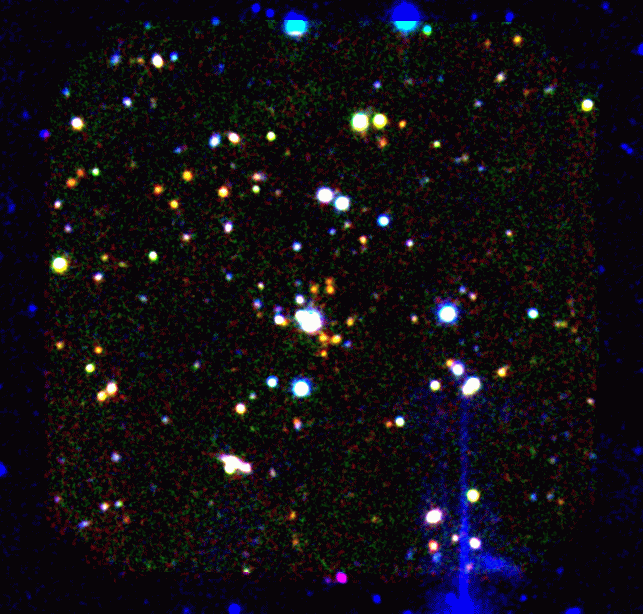
Candidate cluster around the radio-loud quasar 3C205 (Q0835+580) at z=1.534 (North is up and East is left; figure is ~3 arcmin on a side). This color composite is made of deep r, J, and K images (r~26, J~22, K~21). The quasar is the bright blue-white object at the center of the image. The clump of extremely red objects (EROs) near the quasar, and a number of other EROs in the field (most notably the triplet at lower left) have colors and magnitudes consistent with being relatively old (~3 Gyr) early-type galaxies at the quasar redshift, and are much more common in this and the other candidate z~1.55 cluster fields than in random fields. While they are very red, the EROs are bluer than those near the radio galaxy 3C324 at z~1.2, consistent with z_f > 4 and subsequent passive evolution. In addition, the southern radio jet of 3C205 terminates at an extremely compact hotspot coincident with one of the EROs, providing strong evidence that at least some of the EROs are clustered with the quasar.
The elongation to the NE of the quasar is an object, stellar on snapshot HST images, with the colors of a foreground M star. The blue streak at SW is scattered light from a nearby 9th magnitude star.
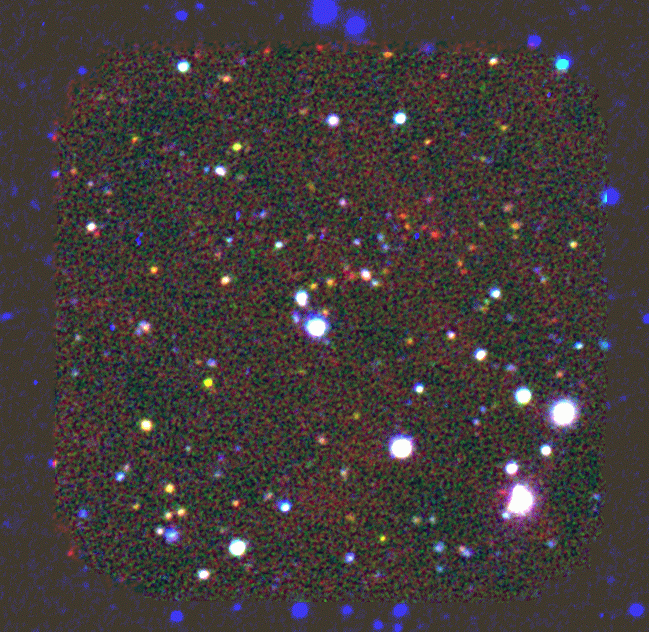
This field (Q1126+101) has everything. Orange objects are still EROs, with r-K>5.3 and J-K=1.5-2, consistent with early-type galaxies at z=1.5. The very red objects clumped mostly to the NW of the quasar may be associated, or even background to it. Many are undetected at J and have J-K>2.6, consistent with early-type galaxies at z>2. The three yellow-green (11 o'clock, 8 o'clock, and 5 o'clock) objects are extremely red in r-K (e.g. r-K>7), but are blue in J-K (J-K=1). (You can also see examples of these objects in the 3C280.1 and 0952+179 fields.) Hopefully IR spectra and/or multicolor imaging will help us determine what they are. The four or five pure-blue objects in a rough horizontal line above the quasar are cosmic rays in the r image.
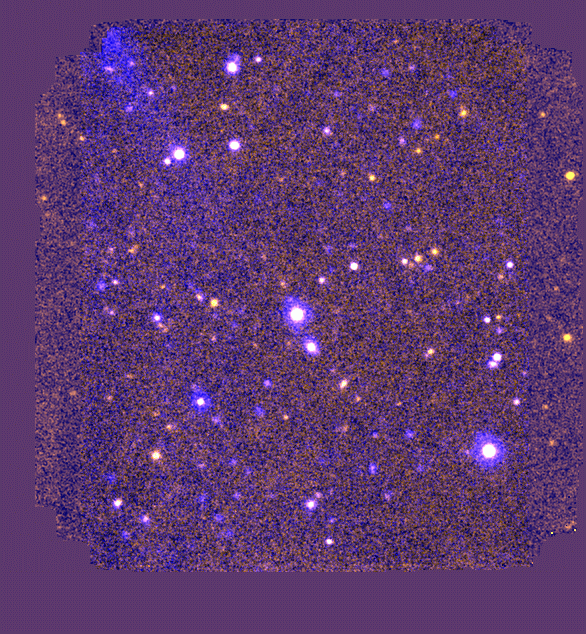
r and K composite only. N up, E left. Scattered light at upper right. Color contrast is not great, but a number of extremely red objects (EROs) can be seen, mostly in the NW quadrant.
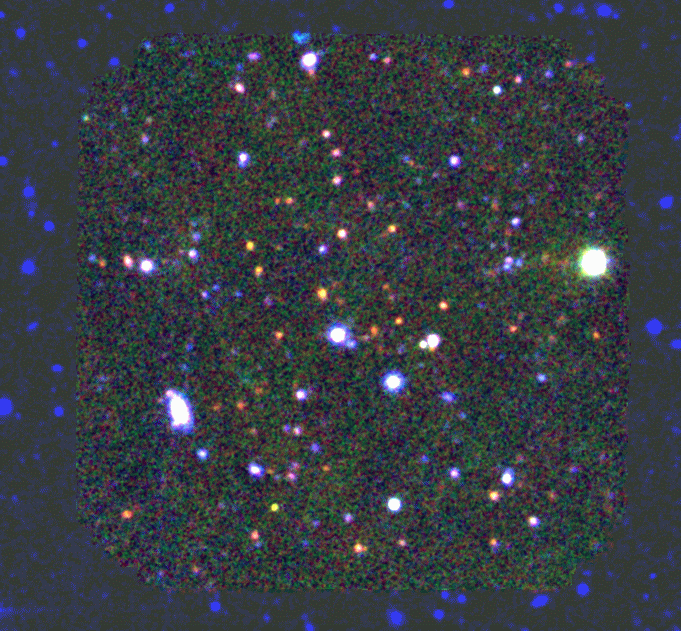
A strong excess of red galaxies is apparent here.
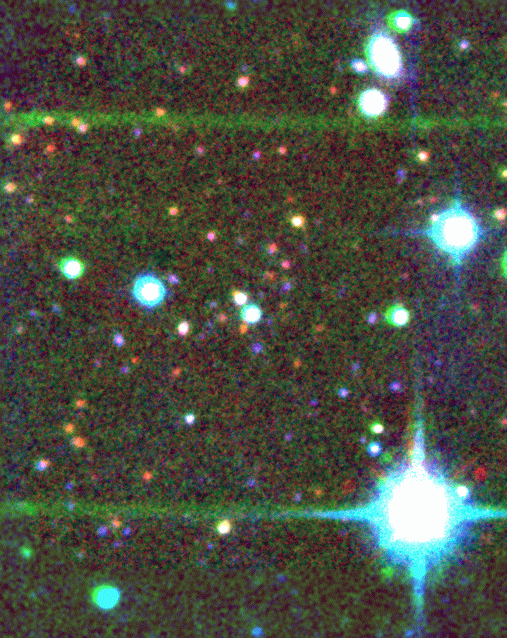
EROs are visible around the quasar and on the east side of the field. Also noticeable is the concentration of blue galaxies around the quasar at center. Green stripes are scattered light in the J image (from a full night on the Steward 61").
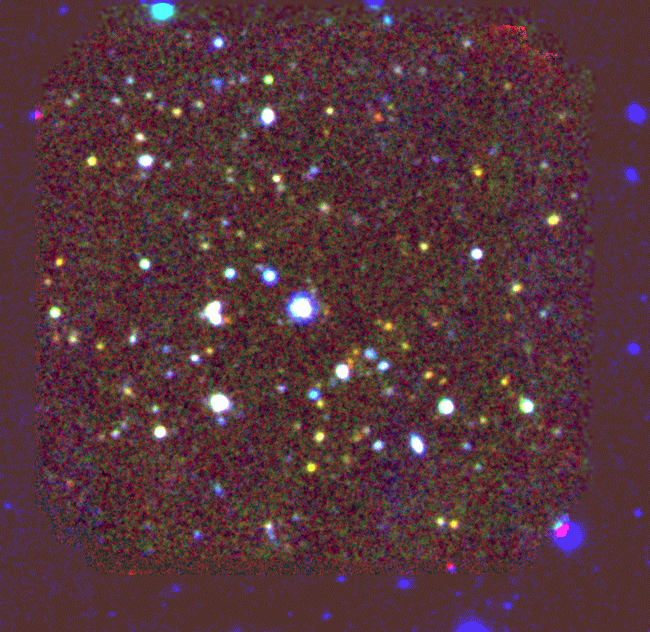
A rather dull field -- no large excess of EROs to be found.